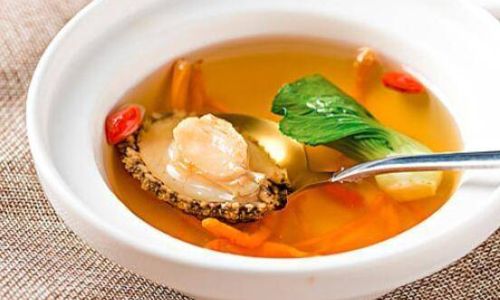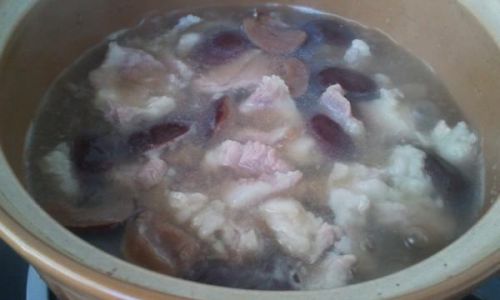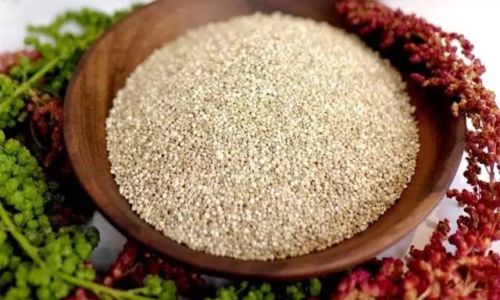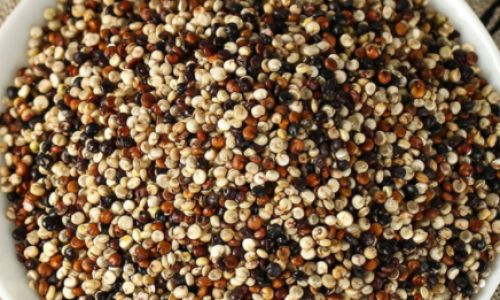Abalone, a prized marine delicacy revered for its tender texture and briny sweetness, has long been a centerpiece of gourmet cuisine across cultures. Valued for its culinary versatility and nutritional richness, this mollusk thrives in cold, nutrient-rich coastal waters, particularly in regions like Australia, Japan, and South Africa. When transformed into a nourishing soup, abalone becomes a canvas for culinary creativity, blending seamlessly with an array of ingredients to create harmonious flavor profiles. This article explores the art of pairing abalone with complementary components, from traditional Chinese herbs to unexpected global twists, ensuring every spoonful delivers depth, balance, and culinary elegance.
The Allure of Abalone in Soup
Abalone’s unique flavor—a delicate balance of oceanic freshness and subtle mineral notes—makes it an ideal foundation for broths. Rich in protein, iodine, and essential minerals like magnesium and calcium, it offers both gustatory pleasure and health benefits. When simmered low and slow, its collagen-rich flesh imparts a silky viscosity to soups, creating a luxurious mouthfeel. Yet, abalone’s mild taste risks being overshadowed by assertive ingredients, necessitating thoughtful pairings that enhance without dominating.
Abalone and Chicken: A Timeless Duo
Chicken, with its clean, versatile flavor, forms the backbone of countless soups worldwide. When paired with abalone, it creates a marriage of land and sea, yielding a broth that is both comforting and refined.
Why It Works:

- Flavor Synergy: Chicken’s mild sweetness complements abalone’s brininess, creating a rounded, umami-rich base.
- Texture Contrast: Tender abalone slices contrast beautifully with shredded chicken, adding visual and tactile interest.
- Nutritional Boost: Chicken adds lean protein, while abalone contributes minerals, making this pairing a wholesome choice.
Recipe Idea:
Simmer a whole chicken with abalone, ginger, and wolfberries in a clay pot for 4–6 hours. The resulting broth, golden and clarified, benefits from a final touch of Shaoxing wine and a sprinkle of white pepper.
Pork Bone Broth: Depth and Richness
For soups demanding robustness, pork bones—particularly knuckles or ribs—provide gelatinous richness that elevates abalone’s delicacy.
Why It Works:
- Collagen Powerhouse: Pork bones release gelatin during long simmering, thickening the broth and enhancing abalone’s natural viscosity.
- Flavor Layering: The pork’s savory depth anchors the abalone’s lighter notes, preventing the soup from tasting one-dimensional.
Culinary Tip: Roast pork bones before simmering to develop caramelized flavors. Combine with dried scallops, abalone, and jujube dates for a broth that is both nourishing and complex.
Herbal Infusions: Chinese Medicinal Herbs
In traditional Chinese medicine (TCM), abalone is believed to nourish the liver and clear internal heat. Pairing it with herbs like codonopsis (Dang Shen), goji berries, or Solomon’s seal (Yu Zhu) amplifies its therapeutic properties.
Why It Works:
- Functional Harmony: Herbs like astragalus root (Huang Qi) boost immunity, while abalone’s iodine content supports thyroid health.
- Aromatic Complexity: Star anise, ginger, and dried tangerine peel add fragrant layers without overpowering the abalone.
Recipe Inspiration: Create a “Four Treasures Abalone Soup” with codonopsis, goji berries, abalone, and lotus seeds. Simmer gently with a ham bone for 5 hours, then season lightly with sea salt.

Mushrooms: Umami Amplifiers
Dried mushrooms—such as shiitake, porcini, or black fungus—introduce earthy, meaty umami that deepens the soup’s savory profile.
Why It Works:
- Umami Synergy: Mushrooms’ glutamic acid interacts with abalone’s inosinate, creating a multiplicative umami effect.
- Textural Variety: Rehydrated mushrooms add chewiness, while abalone remains tender.
Pairing Suggestion: Use a mix of dried shiitake and fresh enoki mushrooms. Soak the dried ones overnight to plump them, then simmer with abalone, chicken, and a dash of soy sauce for a Japanese-inspired chawanmushi-style broth.
Seafood Symphony: Dual-Ocean Delicacies
Combining abalone with other seafood—like scallops, clams, or dried oysters—creates a briny, oceanic broth that celebrates marine flavors.
Why It Works:
- Briny Harmony: Seafood pairing avoids muddying flavors, as each ingredient shares a common terroir.
- Visual Appeal: Garnishing with fresh herbs like dill or chives adds a pop of color.
Gourmet Twist: Prepare a “Seafarer’s Brew” with abalone, dried scallops, and quahog clams. Finish with a squeeze of lemon and a drizzle of olive oil for a Mediterranean flair.
Vegetable Medley: Light and Refreshing
For a lighter interpretation, pair abalone with seasonal vegetables like corn, daikon radish, or pumpkin. These additions balance richness with freshness.

Why It Works:
- Sweetness Contrast: Vegetables like carrots or sweet potatoes add natural sugars that temper the abalone’s saltiness.
- Fiber Boost: Vegetables introduce dietary fiber, making the soup more satiating.
Recipe Idea: Roast corn cobettes and pumpkin chunks until caramelized, then simmer with abalone, ginger, and a splash of coconut milk for a creamy, vegan-friendly broth.
International Accents: Global Fusion
Abalone’s adaptability extends beyond Asian traditions. Experiment with Western, French, or even Latin-inspired broths.
Why It Works:
- Cultural Cross-Pollination: Ingredients like saffron, lemongrass, or tomatoes introduce unexpected dimensions.
- Novelty Factor: Fusion pairings can redefine abalone’s reputation as a “traditional” ingredient.
Inspiration: Create a French-style bouillabaisse with abalone, saffron, fennel, and rouille. Alternatively, a Mexican-inspired broth with chipotle, lime, and avocado slices offers a smoky-tangy kick.
Grains and Legumes: Hearty Additions
For a substantive meal, incorporate grains like quinoa, barley, or lentils. These absorb the broth’s flavors while adding texture.
Why It Works:

- Nutritional Completeness: Grains provide carbohydrates and fiber, balancing the soup’s protein content.
- Texture Play: Chewy barley or creamy lentils contrast with abalone’s softness.
Pairing Suggestion: Simmer abalone with pearl barley, dried shiitake, and miso paste for a Japanese-inspired kenchinjiru (Buddhist vegetable soup).
Aromatic Spices: Subtle Heat
Spices like star anise, cinnamon, or Sichuan pepper add warmth without overwhelming the abalone’s subtlety.
Why It Works:
- Aromatic Layers: Spices elevate the broth’s complexity, much like in a pho or ramen.
- Digestive Aid: Ginger and peppercorns aid digestion, making the soup more palatable.
Recipe Idea: Infuse abalone broth with star anise, cloves, and a cinnamon stick. Serve with thinly sliced beef and fresh basil for a Vietnamese-inspired twist.
Wine and Spirits: Depth of Flavor
A splash of Shaoxing wine, dry sherry, or sake can add acidic brightness and depth.
Why It Works:
- Acidity Balance: Alcohol cuts through richness, refreshing the palate between bites.
- Aroma Enhancement: Wine evaporates during cooking, leaving behind fruity or nutty undertones.
Culinary Tip: Deglaze the pot with sake after searing abalone slices, then deglaze with chicken stock for a fragrant base.

Cooking Techniques: Mastering the Broth
The success of abalone soup hinges on technique. Overcooking abalone renders it rubbery, while under-simmering fails to extract its full flavor.
Key Steps:
- Preparation: Soak dried abalone for 12–24 hours (if using) to rehydrate. Fresh abalone requires brushing to remove grit.
- Blanching: Parboil abalone briefly to eliminate impurities.
- Simmering: Use a slow cooker or heavy-bottomed pot. Maintain a gentle simmer—never a boil—to preserve texture.
- Skimming: Remove impurities regularly for a clear broth.
Health Considerations and Sustainability
While abalone is a culinary treasure, overharvesting threatens wild populations. Opt for farmed varieties from reputable sources, and explore alternatives like frozen or canned abalone for accessibility.
Conclusion: The Art of Balance
Abalone soup is a testament to culinary balance—a dance between ingredients that elevate without competing. Whether embracing tradition with herbal infusions or venturing into fusion with saffron and coconut, the key lies in harmony. Experimentation rewards the adventurous cook, transforming a simple broth into a symphony of flavors. So, the next time you cradle a bowl of abalone soup, savor not just its taste, but the alchemy of ingredients that make it unforgettable.






0 comments